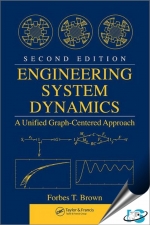Tab Article
For today's students, learning to model the dynamics of complex systems is increasingly important across nearly all engineering disciplines. First published in 2001, Forbes T. Brown's Engineering System Dynamics : A Unified Graph-Centered Approach introduced students to a unique and highly successful approach to modeling system dynamics using bond graphs. Updated with nearly one-third new material, this second edition expands this approach to an even broader range of topics.
What's New in the Second Edition?
In addition to new material, this edition was restructured to build students' competence in traditional linear mathematical methods before they have gone too far into the modeling that still plays a pivotal role. New topics include magnetic circuits and motors including simulation with magnetic hysteresis; extensive new material on the modeling, analysis, and simulation of distributed-parameter systems; kinetic energy in thermodynamic systems; and Lagrangian and Hamiltonian methods. MATLAB® figures prominently in this edition as well, with code available for download from the Internet. This code includes simulations for problems that appear in the later chapters as well as code for selected thermodynamic substances.
Using a step-by-step pedagogy accompanied by abundant examples, graphs, illustrations, case studies, guided exercises, and homework problems, Engineering System Dynamics : A Unified Graph-Centered Approach, Second Edition is a text that students will embrace and continue to use well into their careers. While the first half of the book is ideal for junior-level undergraduates, the entire contents are suited for more advanced students.


